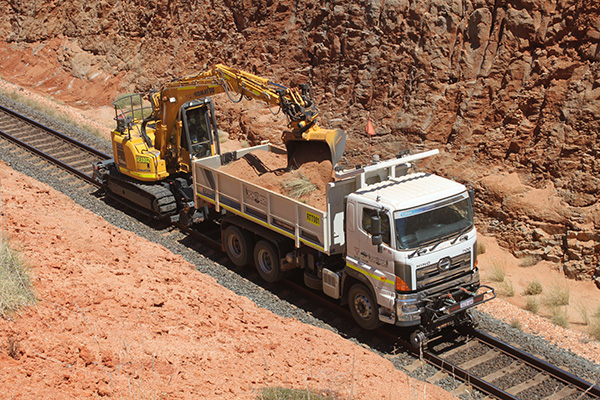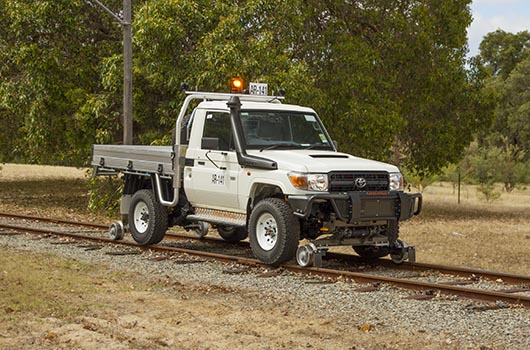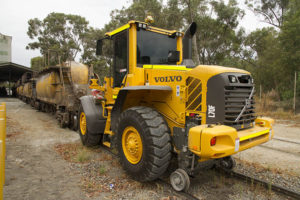Aries Rail have designed and manufactured hyrail conversions for road rail vehicles for over 30 yrs with a range or vehicles to suit every application. Road Rail vehicles are also known as “hi-rail” or “hyrail” vehicles and regardless of the name used, are all based on the same principle – A normally road-going or off-road vehicle has been converted to also run on railway lines.
There are several main types of road rail vehicle, depending on the type of vehicle, its application and the rail gauge on which it operates. Some rail networks have a numbering system to indicate which category a vehicle belongs in but there are variations around Australia and the world so a descriptive name is often easier to use.
All-Wheel-Contact Road Rail Vehicles.
All-wheel-contact road-rail vehicles as perhaps the simplest of all types with all of the road wheels remaining in contact with the rail. This is the typical configuration used for light vehicles operating on standard gauge rail through Australia and the rest of the world.
Front-Elevated Road Rail vehicles
Front-elevated road-rail vehicles use the rear road wheels for braking and traction on-rail whilst the front road wheels are lifted above the rail. This method is particularly suited to light vehicles where the road wheels are around the same distance apart as the rails.
Larger road rail vehicles such as trucks can be adapted to operate in this way but for narrow gauge will often require chassis and road wheel modifications to bring the road tyres close enough to sit on rail.
Fully-Elevated Road Rail vehicles
A fully-elevated road-rail vehicle is one where the road wheels have been lifted completely clear of the rail. This is often done to allow larger trucks to operate on narrow gauge rail or on standard gauge where high reverse speeds are required. It is the only method that should be used to convert plant such as tracked excavators.
What are they used for?
The biggest advantage of a road-rail vehicle when compared to traditional rollingstock is their ability to quickly transfer from road to rail, allowing them to work on sections of rail that are not connected or would require a long on-rail journey to move from one line to another. They are also able to easily operate between trains, travelling on-rail before off-tracking before the next train.
Many light vehicles are fitted with hyrail conversions to allow them to be used by track inspectors. The inspector will travel between trains looking for defects such as broken or damaged rails that could lead to the derailment of a train.
Specialist equipment such as elevated work platforms may be fitted to road-rail vehicles to allow for maintenance of infrastructure during night-time or weekend maintenance periods.
Another use for road-rail vehicles is shunting of rollingstock. Here the ability to move easily from one rail to another is highly advantageous as it allows the operator to quickly move wagons and trains around. With shunting capacities up to 4000t, specialist road-rail shunters can easily move whole loaded trains.





